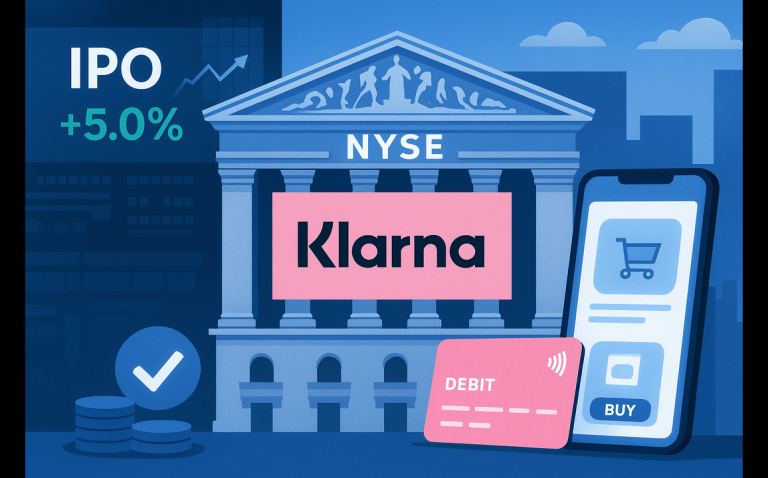Klarna stock price rose initially after its much-anticipated initial public offering. KLAR surged to over $57 and then closed at $45, giving it a market capitalization of over $17 billion. This article explores whether it is safe to buy the Klarna stock now.
Klarna is a growing company
Klarna, a Swedish technology company that offers buy-now, pay-later solutions primarily in Europe and the United States, went public, raising millions of dollars.
The most recent results showed that the company’s business was growing. Its revenue rose from $661 million in the second quarter of 2024 to $823 million this year. Most of this revenue came from the transaction and service segment, which made over $604 million.
The transaction and service division is where the company is paid by sellers whenever companies use its payment option. Its interest income rose to $219 million, up from $164 million in the same period last year.
Most of Klarna’s services is free for clients in that they buy products and then pay in four equal instalments. It also offers other solutions, charging interest for larger purchases and longer durations.
The company’s gross merchandise value (GMV) rose to $31.2 billion from $25 billion, while the number of its active consumers rose from 85 million to 111 million, and its merchants are nearing 800,000.
The challenge, however, is that Klarna is not profitable as it focuses on growth opportunities in a highly competitive industry. It made a loss of over $53 million, up from $18 million in the same period last year.
Klarna was profitable a few years ago, but the management decided to boost spending as competition with AfterPay and Affirm intensified.
Is Klarna stock a good buy?
Some analysts believe that Klarna stock is a good buy, citing its strong market share in the BNPL industry and the large total addressable market. With inflation rising, more people are turning to BNPL platforms for simplified shopping.
One analyst who is bullish on Klarna stock is Jim Cramer, the popular CNBC pundit. He praised the company pointing to its past profitability, valuation, and the fact that it offers other products. He said:
“While Klarna roared right out of the gate, the stock hasn’t gone to an insane valuation yet. I think the numbers look good, so I think it can be bought at these levels.”
Jim Cramer is right to a large extent as Klarna is valued much lower than Affirm, which has a market cap of over $27 billion.
The two companies are of a similar size, with Affirm having a revenue of $876 million in the last quarter compared to Klarna’s $823 million. The major difference is that Affirm eked a net profit of $69 million in the quarter.
Klarna is bigger than Affirm in some aspects, including in the number of customers and merchants. Affirm has 23 million users compared to Klarna’s 111 million.
Still, historically, buying recently IPOed companies is not always the best strategy. In most cases, these stocks rise initially after the IPO, then plunge, and then rebound.
A good example of this is the Circle stock price, which surged by after its IPO and has now plunged by over 50% from its all-time high. Similarly, Bullish stock initially soared shortly after the IPO and then dropped by over 47% to a record low of $33.
One reason for this is that the hype surrounding the IPO normally ends. Also, investors start to focus on the lockup expiry, which happens six months after an IPO.
Therefore, the most likely scenario is where the Klarna stock price retreats in the next few months and then rebounds. In the long term, the stock will likely surge to over $100.
Read more: Klarna IPO is coming: will its stock be a good buy?
The post Klarna stock jumped after IPO, but history points to a crash appeared first on Invezz

